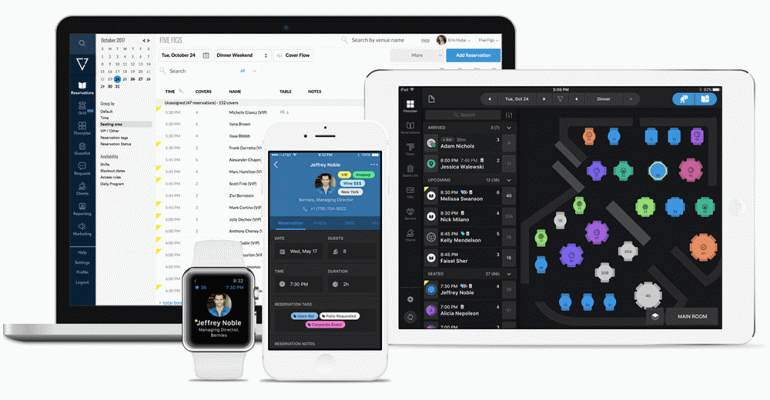Read more: 10 technologies that have made a real difference for restaurants
Read more: Five guest-facing technologies
Operators identify innovations that are changing the game.
1. Reservations
Michael Pagana, operations director, Ethan Stowell Restaurants, Seattle
Earlier this year, Ethan Stowell Restaurants switched from OpenTable to SevenRooms, following a move to Toast’s cloud-based point-of-sale system. Choosing a new reservation system wasn’t easy, said Michael Pagana, the group’s operations director.
“They’re all bragging about their bells and whistles,” he said.
After looking at several systems and piloting two, the group went with the cloud-based SevenRooms. Pagana said the system gives him access to reservations and floor plans.
“From any phone or tablet, I can go in and change covers, look at profiles; I can text guests straight through the platform,” he said. “But the biggest thing for us is that it’s a flat monthly fee, not per reservation, like with OpenTable. It’s at least half the price of OpenTable at most of our properties.”
Pagana said he likes that guests come to the restaurant websites to make reservations, rather than going through a third-party site. That allows the restaurants to promote special events or wine dinners.
SevenRooms also has a centralized database that allows the group’s restaurants to share guest profiles, tagged to phone numbers. For instance, if a guest at Tavolàta is vegan or allergic to shrimp, those preferences will be available to the server when the guest visits Staple & Fancy, or another of the group’s restaurants.
In addition, the restaurants are in beta test of a more advanced feature that ties allergies automatically to a guest check. That means servers wouldn’t have to remember to put in allergy alerts for each order. If a guest orders dessert as an add on, for example, the server might forget to note the allergy on that add-on order.
Pagana said the group has been able to put the money saved by the switch to SevenRooms into direct marketing. Tavolàta, which piloted the use of SevenRooms for about five months, has seen no drop in online reservations, and sales are up.
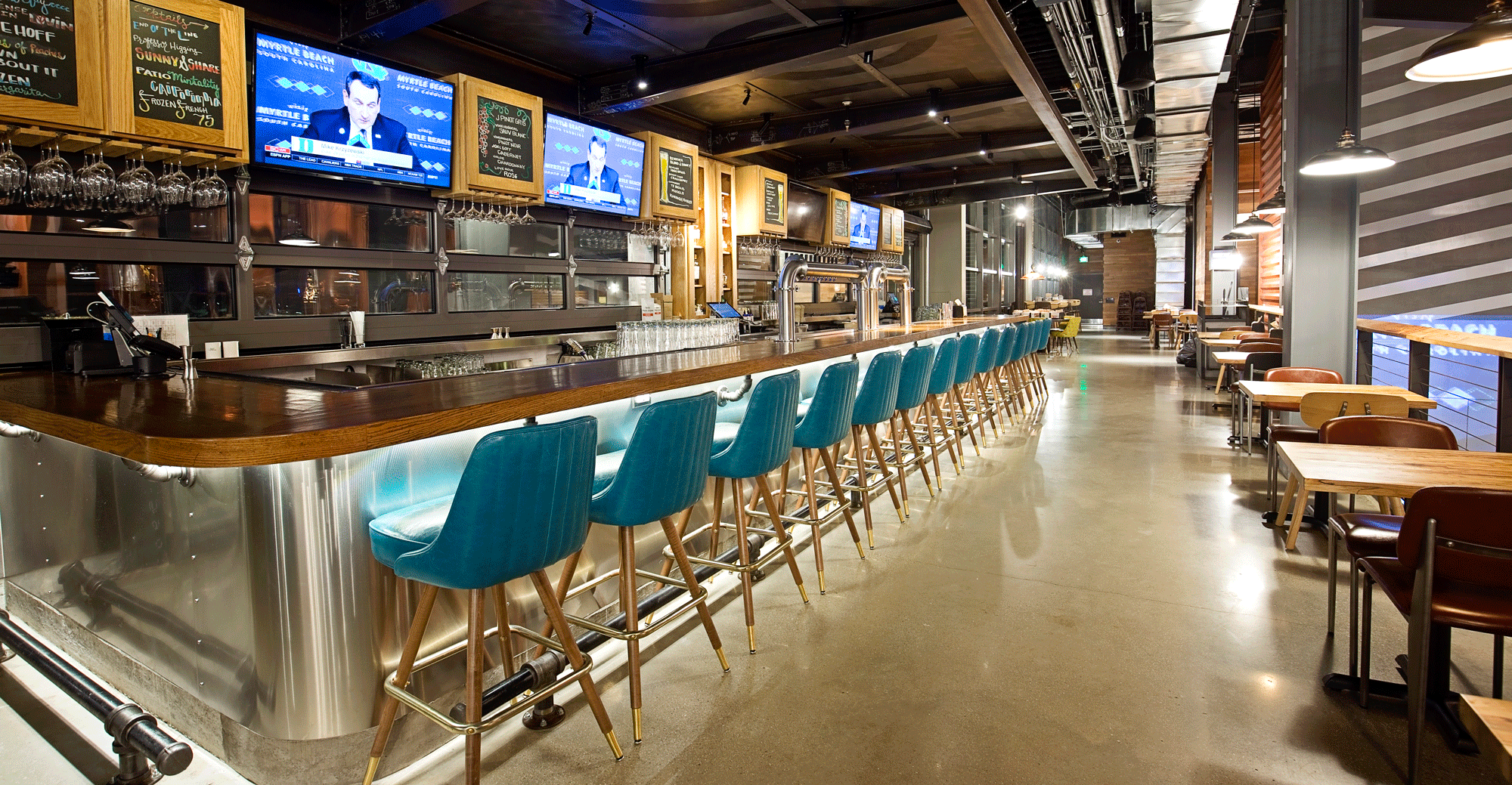
2. Data
Jack Gibbons, president, Front Burner Restaurants, Dallas
Front Burner Restaurants operates the Twin Peaks casual-dining chain, as well as independent restaurants like Mexican Sugar and The Ranch at Las Colinas, along with a new 55,000-square-foot food hall the company plans to grow.
The technology that has made a difference for all the brands has simply been the availability of data, according to Jack Gibbons, president of Front Burner Restaurants. The company collects data from multiple sources but uses Marketing Vitals to pull the information together.
“We use data for price elasticity, to determine what we keep on the menu or what we take off, and how we evaluate staff and how they’re performing,” Gibbons said. “That kind of data wasn’t available years ago. But when that kind of information is in the hands of managers at the unit level, they understand that training is important, and it becomes measureable.”
Front Burner runs an analysis monthly to study menu mix, for example, which can tell if items are priced appropriately, or they would sell better at a different price.
“You can measure how dessert sales go, and you can tell who are your top 25 [servers] selling dessert, or the bottom 25,” Gibbons said. “And you can train that bottom 25 to help them sell more and move that mean score higher.”
The investment has more than paid for itself.
“As a manager, people want to improve, and you need tools to help you study it,” Gibbons said. “Everyone wants to use their instinct and gut feelings, but this can validate those gut feelings and prove them out.”
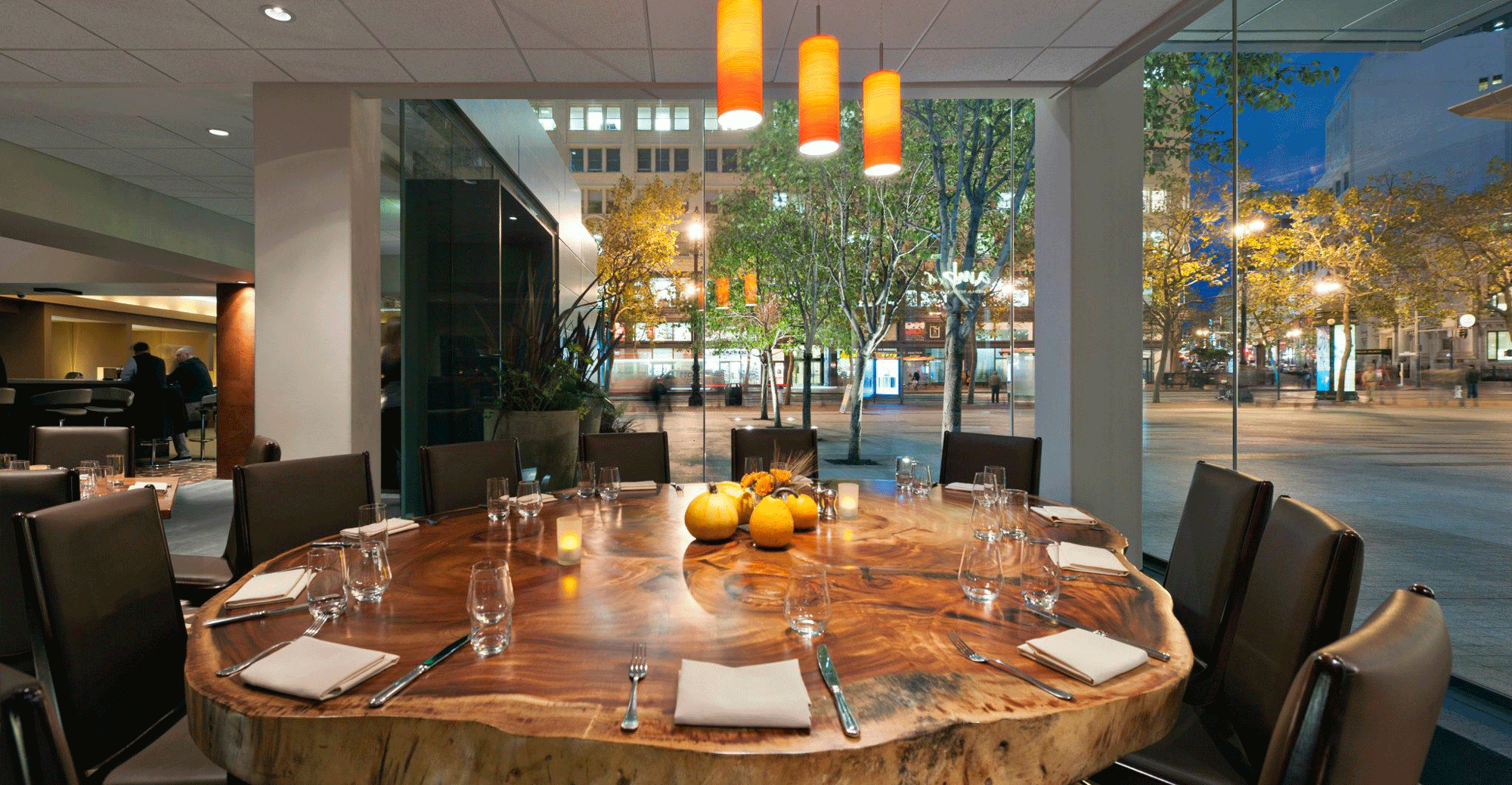
3. Cloud-based POS system
Adam Jed, co-founder, Bluestem Brasserie, San Francisco
When it comes to technology, Adam Jed admits that the restaurant industry can be a bit archaic, if not downright medieval. But his San Francisco brasserie moved into the future last year with a cloud-based POS system by Toast.
“It is real time; it is cloud-based; and the hardware is finally the least important thing because it can work on any device,” Jed said. “And it’s about time.”
The system gives updates on when workers are approaching meal-break violations, for example. In the course of an evening, he can see how items are selling and make changes on the fly. He can manage labor against how things are selling.
Toast is also integrated with HotSchedules, the scheduling software Bluestem uses to manage its 91 employees.
“You can actually lock people out from clocking in early,” Jed said, a common problem. “And you can schedule based on forecasted sales.”
Jed said the cost of the Toast POS was about one-sixth of the cost of the Micros legacy system previously used at the 220-seat restaurant.
Next on Jed’s wish list is a fully integrated POS system that will speak to other aspects of the operation.
“Technology,” he said. “We have to embrace it.”
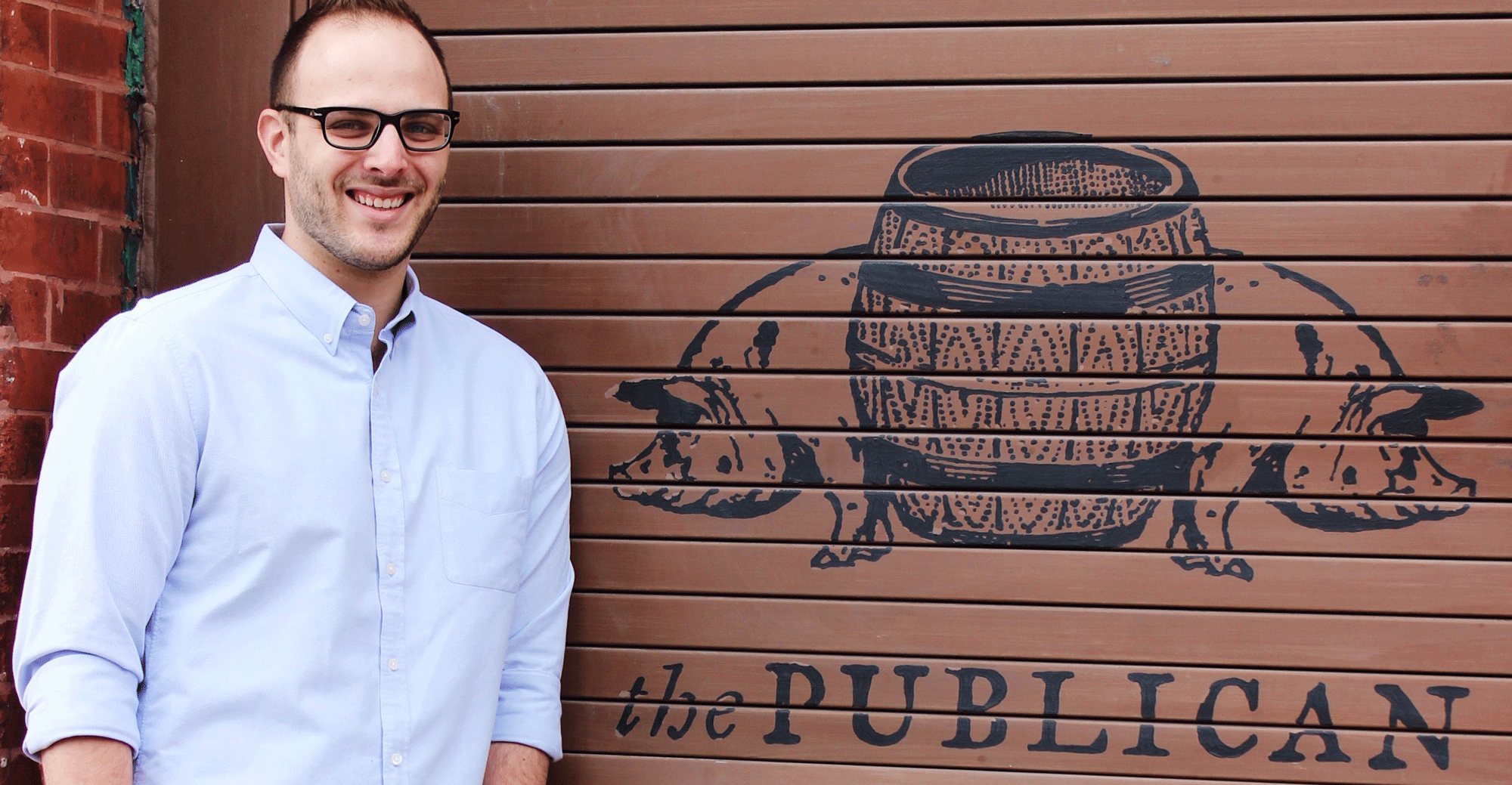
4. Scheduling
Ben Drescher, general manager, The Publican, Chicago
Chicago-based One Off Hospitality Group has been rolling out the HotSchedules online scheduling tools at its nine restaurants over the past year, including at The Publican.
The system has been real evolution from the days when one person compiled a schedule on paper.
“People’s schedule requests would be in a book, and you’d sit there and try to fill slots. That was printed out and put in one spot, and people had to physically go there to see it,” said Ben Drescher, general manager of The Publican.
With HotSchedules, the system is online. When scheduling shifts for the week, managers are able to see what fits with the actual budget, he said. Overtime is easily monitored and employees can trade shifts electronically. It serves as an instant messaging system, both manager to employee and peer-to-peer.
Schedules can be sent to each worker’s smartphone. And, because employees sometimes cross shifts at other restaurants within the group, HotSchedules keeps track of schedules and overtime groupwide, not just by location.
“We can build a budget weekly and monthly for labor categories broken down to every position, and I can take numbers I’m shooting for and put them in, so it will show me what I should be spending,” Drescher said.
HotSchedules is integrated with the restaurant’s cloud-based POS, “so there are all kinds of analytics that comes from it,” he said.
The system has also helped the restaurant give workers more notice of their schedules, up to two weeks ahead. Drescher is working toward booking schedules a month out.
“It’s about taking care of your employees, making sure they have quality of life and that they know what their schedule is,” he said.
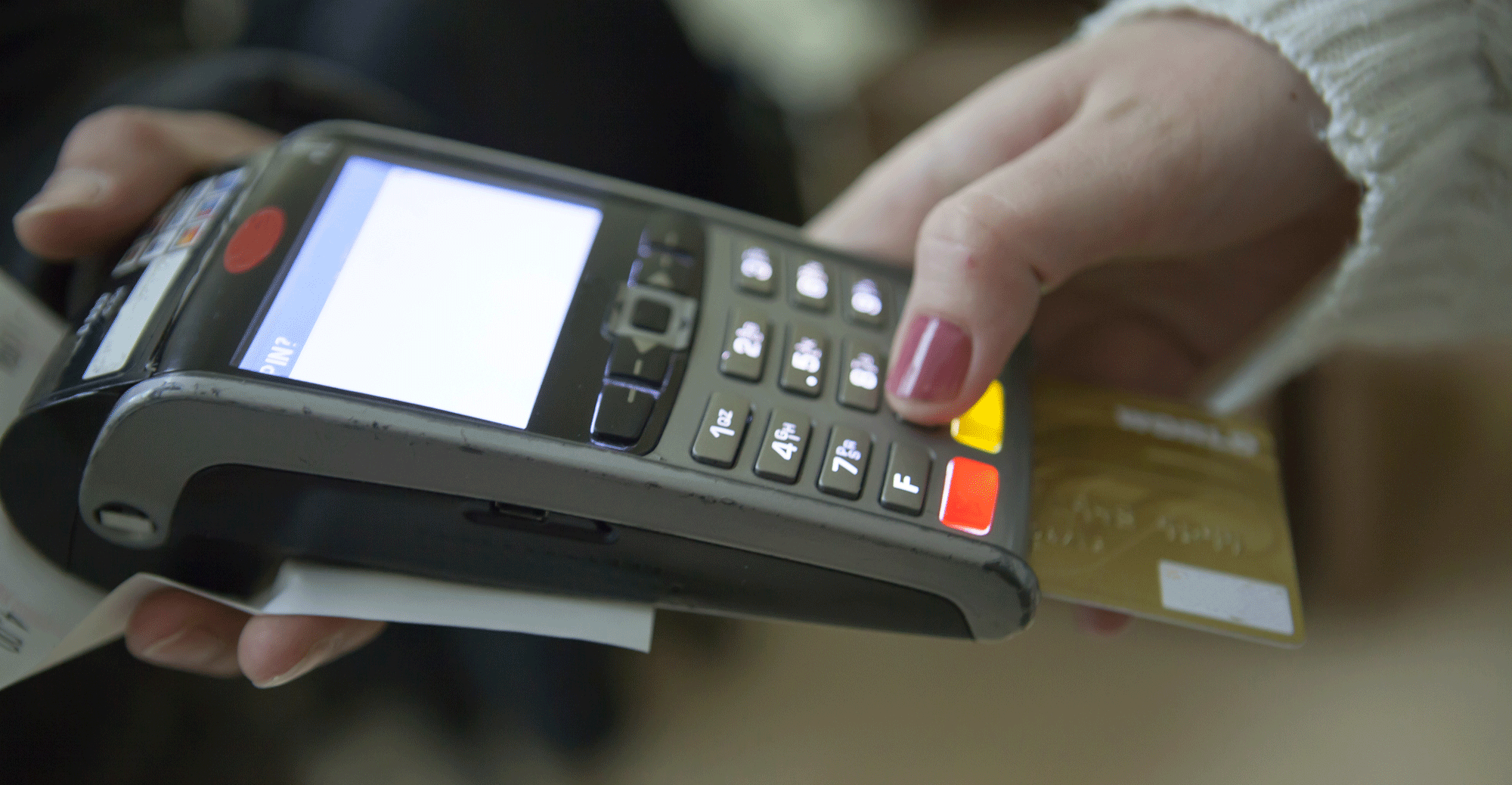
5. Chip readers
Sean McCullough, director of operations, Graspa Group, Miami
It has been more than two years since banks and payment processors shifted liability for fraudulent credit card charges to restaurant operators that do not support chip-based EMV cards. The goal of EMV compliance standards is to protect consumers, but the shift opened Sean McCullough’s six restaurants, operated by Graspa Group in Miami, to fraud.
After the shift, customers whose cards were swiped at Graspa Group restaurants got smart and started fraudulently disputing charges. Rather than investigate, banks automatically shifted the charges to the merchant.
At Salumeria 104, for example, Graspa Group had more than $1,200 in fraudulent “chargebacks” in one month. All customers had to do was call their credit card company and say they never used the card at the restaurant.
“We had one customer in particular — he was a regular and we have him on video. He did that,” McCullough said. “So, we went to him and said, ‘Hey, listen, you did this and we have it on video,’ and we never saw him again.”
But the group needed a surer solution. About eight months ago, McCullough shifted Salumeria 104 to the chip system. Rather than just bringing in a chip machine, Graspa Group moved to Android-based tablets by PayMyTab, with Omnivore providing integration with the restaurants’ POSitouch POS system.
Now servers bring the chip-reading tablets to the table for payment, so cards never leave guests’ hands. They sign on a screen and get a text receipt, eliminating paperwork for the restaurant and providing mobile numbers as a potential marketing tool, McCullough said.
The move has completely eliminated the chargeback issue, he said. The system is being rolled out to the group’s three other restaurants that share POSitouch.
The group’s two pizza concepts, however, have lower transactions and a separate POS system, and will not immediately make the shift.
“It’s cost of implementation versus how much we’re losing,” McCullough said.

